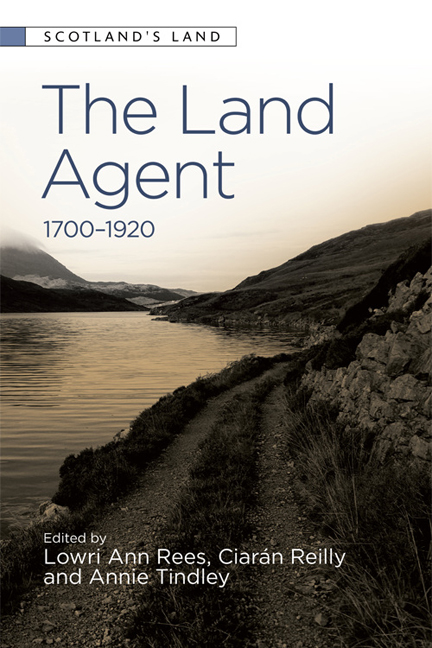Book contents
- Frontmatter
- Contents
- List of Figures
- Acknowledgements
- Notes on the Contributors
- Map of the British and Irish Isles
- Introduction
- Part I Power and its Constructions on Landed Estates
- 1 ‘Stirring and advancing times’: Landlords, Agents and Improvement on the Castle Howard Estate, 1826–66
- 2 ‘Not a popular personage’: The Factor in Scottish Property Relations, c. 1870–1920
- 3 The Factor and Railway Promotion in the Scottish Highlands: The West Highland Railway
- Part II The Transnational Land Agent: Managing Land in the Four Nations and Beyond
- Part III Challenges and Catastrophe: The Land Agent under Fire
- Part IV Social Memory and the Land Agent
- Postscript
- Index
3 - The Factor and Railway Promotion in the Scottish Highlands: The West Highland Railway
from Part I - Power and its Constructions on Landed Estates
Published online by Cambridge University Press: 11 August 2018
- Frontmatter
- Contents
- List of Figures
- Acknowledgements
- Notes on the Contributors
- Map of the British and Irish Isles
- Introduction
- Part I Power and its Constructions on Landed Estates
- 1 ‘Stirring and advancing times’: Landlords, Agents and Improvement on the Castle Howard Estate, 1826–66
- 2 ‘Not a popular personage’: The Factor in Scottish Property Relations, c. 1870–1920
- 3 The Factor and Railway Promotion in the Scottish Highlands: The West Highland Railway
- Part II The Transnational Land Agent: Managing Land in the Four Nations and Beyond
- Part III Challenges and Catastrophe: The Land Agent under Fire
- Part IV Social Memory and the Land Agent
- Postscript
- Index
Summary
INTRODUCTION
THE LATE NINETEENTH-CENTURY western Highlands saw a surge of railway promotions. Estate factors became activists and parliamentary witnesses; they were caught up in railway construction, and they made use of the new railways. This chapter examines and contextualises their involvement, highlighting their important role in the development of railway infrastructure in rural Britain.
The West Highland Railway was promoted as a 130-mile line from Craigendoran on the lower Clyde to a new harbour at Roshven (Loch Ailort). The 100 miles to Fort William were authorised in 1889, completed five years later, and a short branch to Banavie on the Caledonian Canal was added in 1895. This was the only section that saw the light of day. With Mallaig (at the mouth of Loch Nevis) substituted for Roshven, the 40-mile West Highland Extension was approved in 1894 but awaited state assistance, finally granted in 1896: the route was finished to Mallaig in 1901. Contemplated but not pursued was a link from Glen Spean, by Loch Laggan, to the Highland Railway in Strathspey. Likewise, authorised but unbuilt was the West Highland Ballachulish Extension, south from Fort William (unlike the Callander & Oban Company's Connel Ferry–Ballachulish branch, which was built and opened in 1903). The Loch Fyne Light Railway, from West Highland Arrochar & Tarbet to St Catherine's opposite Inveraray, though approved under the Light Railways Act of 1896, was allowed to languish.
By agreeing to guarantee, work and maintain the West Highland, the North British Company could invade the territory of the Caledonian Company, their great rival, who worked the Callander & Oban Railway (completed to Oban in 1880). Moreover, the Highland Company were alarmed, in that first Roshven and then Mallaig threatened their traffic through Strome Ferry, terminus of the Dingwall & Skye line (opened in 1870). More alarming still was the prospect that a West Highland (that is, North British) advance up the Great Glen would breach the Highland's monopoly at Inverness. The much-contested Invergarry & Fort Augustus Railway, diverging from the West Highland at Spean Bridge, was authorised in 1896 and opened in 1903; but the 30-mile gap onward to Inverness was never filled, and the Invergarry & Fort Augustus would remain a West Highland appendage.
- Type
- Chapter
- Information
- The Land Agent , pp. 56 - 74Publisher: Edinburgh University PressPrint publication year: 2018



